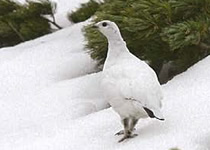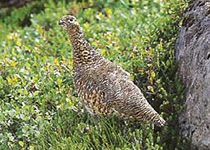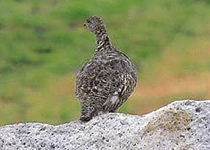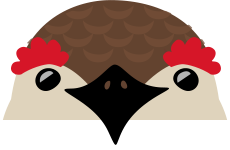
Protective coloration / molting
The rock ptarmigan's molting allows it to completely change color with the passing seasons, giving it a natural camouflage which offers protection from predators. While many birds molt twice a year, the rock ptarmigan molts three times every year.
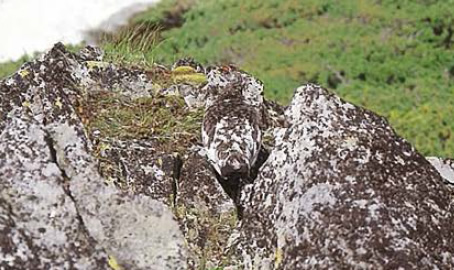
In spring, the pure white feathers change to dark brown feathers for males and yellow-brown feathers for females. For males, short, black plumage will start to appear around the head, neck and chest as early as late February. The longer feathers which appear during the mating season (also known as summer feathers) will finish coming in by late May. For females, the molting process begins around late April, and is usually completed within a month. Plumage on the body and the covert feathers on the wings come in during this season.
In mid-July, as chicks leave the nest and it is no longer necessary to guard the territory, males begin the molting process, changing to winter feathers. Females do not begin molting until late August or September; this is because the processes of raising young and molting each take a large amount of energy, and it is not possible to do both at the same time. During this molting phase, feathers of the entire body are regrown, including the flight and tail feathers. After molting males and females both turn the same shade of dark brown, and look so similar that it is difficult to tell them apart.
Females that failed to mate go through the molting process at the same time as males, between July and early August. If flight feathers of females (which are different in size from male flight feathers) are found on the ground at this time, it is a clue that a female which did not mate is in the area.
In mid-October, rock ptarmigans begin their unique third molting phase. Timed to match the first snows, birds shed their dark feathers, revealing white feathers coming in on the back. Rock ptarmigans display a spotted pattern during this season; if you watch carefully, you may even see how gusts of wind ruffle the dark feathers, occasionally causing them to fall out. By mid-November, most birds will be completely white in color, ready to face the winter.
Male
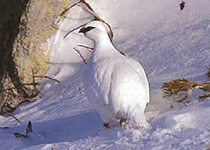
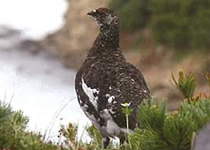
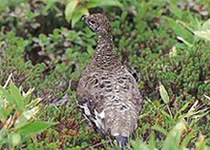
Female
